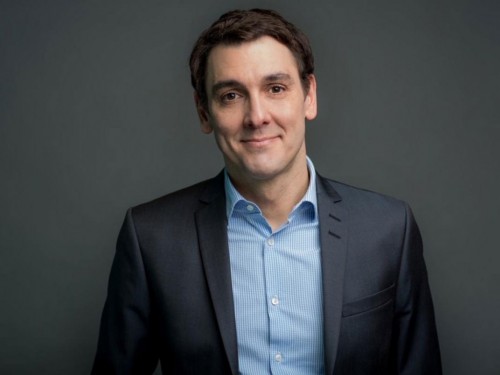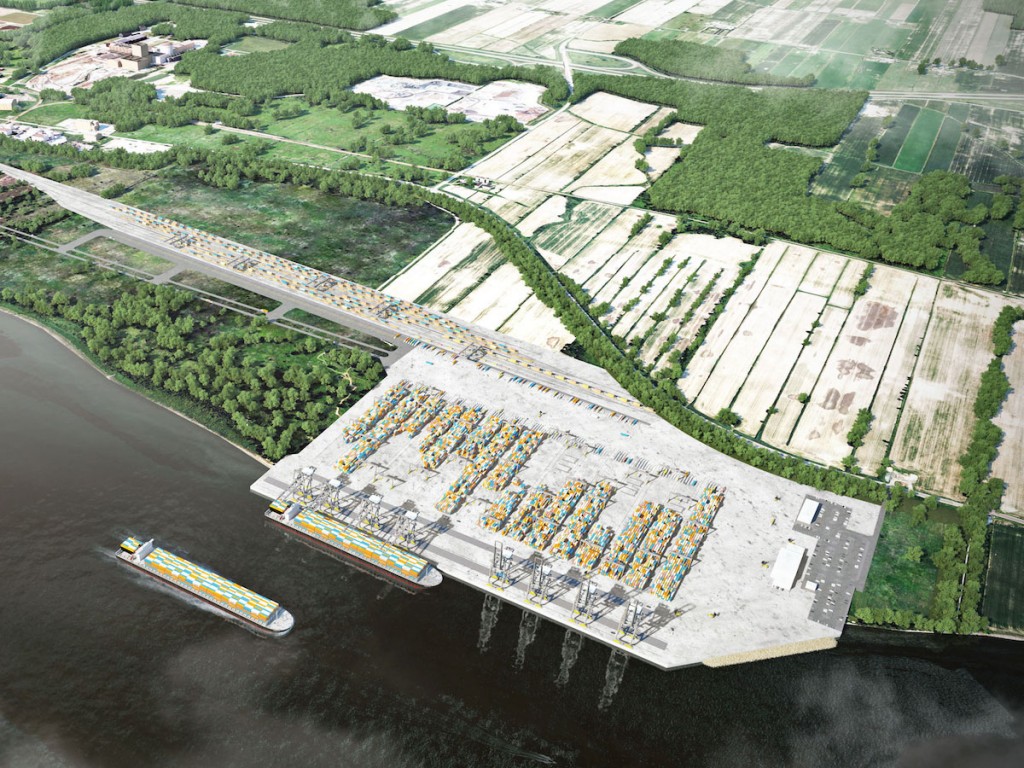At a technical briefing this week, the Port of Montreal updated the procurement process that national or international consortiums need to follow in seeking to partner with Canada’s second largest maritime gateway in its biggest project in decades: establishing a sixth container terminal. If all goes according to plan, a revised tentative timeline marks the scheduled operational date for late 2026 versus 2025 for the container terminal at Contrecoeur, 25 miles downstream on the St. Lawrence River, where there is already bulk shipping activity.
Upon completion, the terminal able to handle 1.15 million TEUs will boost the port’s capacity from 2.1 million TEUs to 3.5 million TEUs. Actual construction would begin in 2023.
The undertaking has advanced considerably after earlier this year receiving federal government regulatory approval on environmental mitigation measures.
See story by Leo Ryan in August of 2019: Montreal container project moves toward deal with Canadian infrastructure bank
On the crucial financing side, too, things appear well in hand. The project has received $300 million in financial backing from the Canada Infrastructure Bank and a $55 million grant from the Quebec government.
“The Contrecoeur container terminal will be a world-class infrastructure able to efficiently serve Quebec, Ontario and the US Midwest,” recently declared Martin Imbleau, president and CEO of the Montreal Port Authority. “With its industrial zoning and outstanding location near rail and highway access, the future terminal is an exemplary eco-friendly opportunity for a private partner seeking to participate in the growth of the St. Lawrence-Great Lakes Trade Corridor.”

The anticipated capital expenditure for Contrecoeur has been estimated at C$950 million. This translates into an estimated low cost of C$826 (US$652) per container, indicated Paul Bird, Vice-President Contrecoeur, while outlining the two-stage Design-Build-Finance-Operate-Maintain (DBFOM) procurement process for potential international and domestic bidders.
Between 2015 and 2019, Montreal’s container cargo grew from 13 million metric tons to 15.1 million tons (representing 1.75 million TEUs). While the global pandemic contributed to a 6% decline in box traffic in 2020, this year is showing a steady recovery to previous levels.
“There is room for growth in response to demand,” Bird said. By 2026, the port calculates that without further expansions it will reach 90% of its throughput capacity.
During his virtual presentation, Mr. Bird underlined the success of Montreal’s business model as a destination port spurred by fully-loaded ships in and out. The largest containerships cannot service Montreal due to draft restrictions. But post-Panamax containerships can access Montreal. In this connection, Bird affirmed that Montreal handles twice as many containers per trip than larger vessels on “milk runs” through the US East Coast ports: 4,250 versus 2,180.

Same Values
The port located deep in the heart of North America is on the shortest and straightest path between Europe and the Midwest. The average containership size is put at 3,900 TEUs.
The Request for Qualification (RFQ) is scheduled to be launched on November 23 and is expected to be on market for three months. The RFQ will qualify a maximum of three respondents, with their identities announced in Q2 2022.
A Request for Proposals (RFP) is scheduled to be issued on Q2 2022 and is expected to be on market for nine months. The RFP will result in the selection in Q3 2023 of one successful proponent to design, build, finance, operate and maintain the Contrecoeur terminal.
See story by Leo Ryan in January 2020: Port of Montreal continues record cargo pace and expansion projects
Which strategic partner on horizon?
Mr. Bird said that the eventual strategic partner “must share the same values as the Montreal Port Authority.”
Among the partner’s responsibilities: strong connections with shipping companies committed to bring new business to Eastern Canada’s leading container gateway; strong interest in innovation and efficiency; strong focus on good community relations; strong environmental and sustainable development approach.
So, which domestic or international terminal operators among bidding groups will emerge in the coming months?
In 2019, Montreal Gateway Terminals Partnership and Tremont terminal (part of Logistec Corporation) were known to be involved in discussions as site operator, either separately or jointly. But no public follow-through so far.
For industry observers, attention is now turning to several leading international terminal operators.
One is Singapore-based PSA International which in 2019 purchased Halterm Container Terminal in the deepwater Port of Halifax from Macquarie Infrastructure Partners. The facility has been re-branded PSA Halifax.
Another is Hong Kong-based Hutchison Ports, which this past summer lost an opportunity to forge an East Coast beachhead to North America when Canada’s federal government firmly rejected, on environmental grounds, the controversial Laurentia container port project of the Port of Quebec.
Certainly, a potential suitor bearing watching closely is Ports America, the biggest terminal operator in North America which has been acquired by the giant Canada Pension Plan in a transaction reportedly exceeding US$4 billion that is expected to close in the fourth quarter of this year. The CPP has bumped up its previous minority interest to 100% ownership.
Two other big pension funds in Canada actively engaged in infrastructure investing may also be worth mentioning as eventual players: Ontario Teachers Pension Plan (a 37.5% equity interest in GCT Global Container Terminals, including Deltaport in Port of Vancouver) and Quebec’s CDPQ (a container port project in Indonesia).

